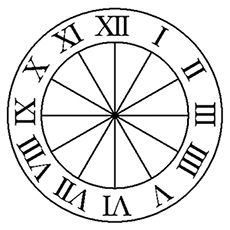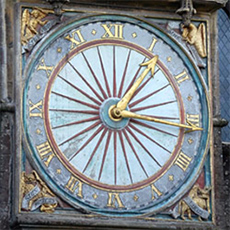The numerical notation of 4 is IV in Roman numerals. You probably think so, too.
However, there are many cases where IIII is used at the 4:00 position on the dial plates of clocks that use Roman numerals.
There are a variety of theories about this.
One holds that in the late 14th century, Charles V, the king of France, told a watchmaker to change IV to IIII, because he considered IV to be bad luck as it was created by subtracting 1 (I) from his title 5 (V). The notation IIII was used for the clock at the earliest Wells Cathedral, which was built at the end of the 14th century in England, and has been conventional since then. Somebody thought IV was not easily understandable because it resembled VI and was also well balanced with VIII, which was placed in its symmetrical position. In the middle ages in Europe, IIII was generally used, not IV, to express the Roman numeral 4 until around the 17th century.
In fact, you can see the notation IIII on mechanical turret clocks that were made before around the 17th century. The most popular theory is that the notation IIII has become conventional in the industry because it looked well balanced on the radial dial plate design and has remained on clocks and watches ever since.
Even the clock numbers you are familiar with have an unexpected history. See how 4 is notated on the clocks using Roman numbers around you.





